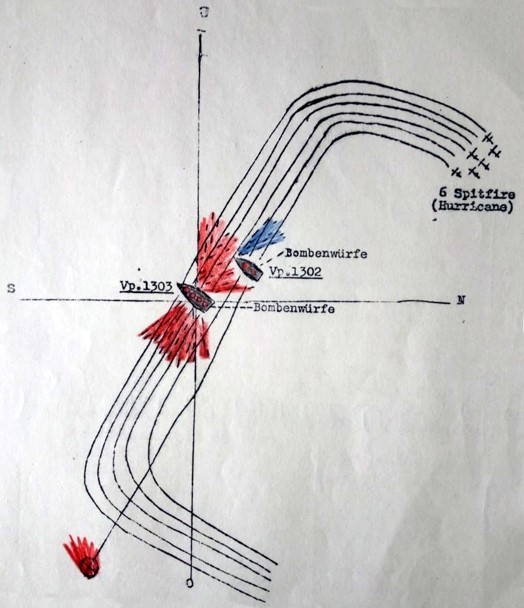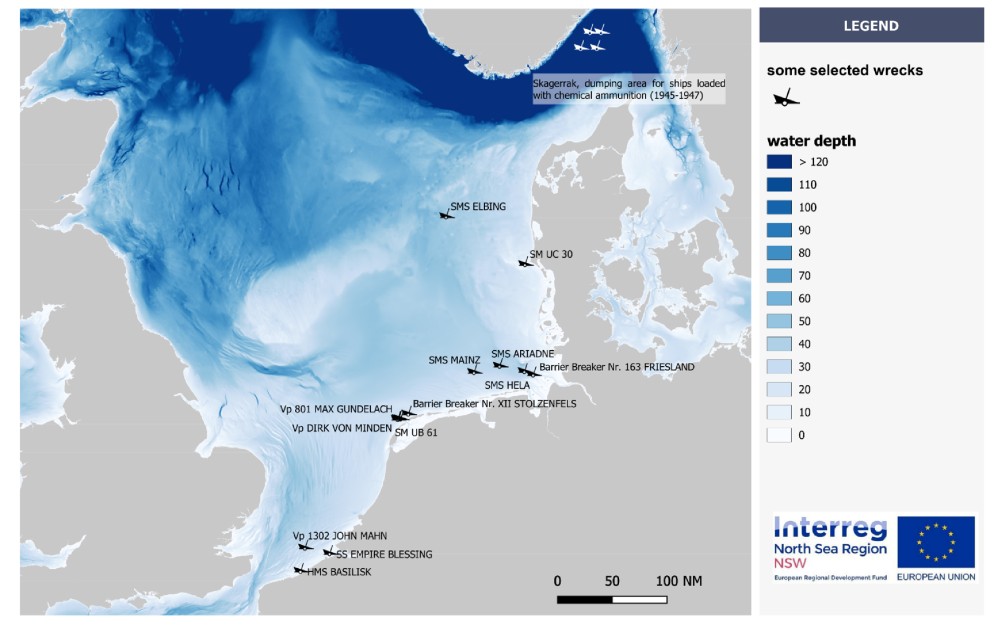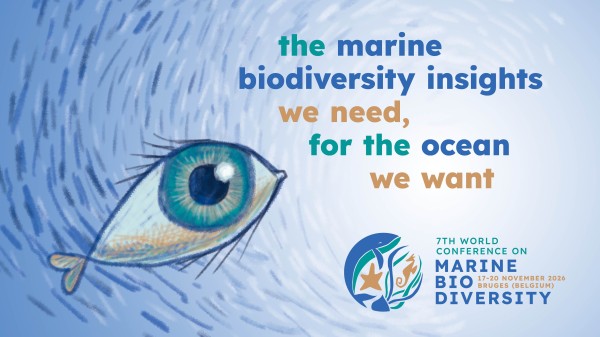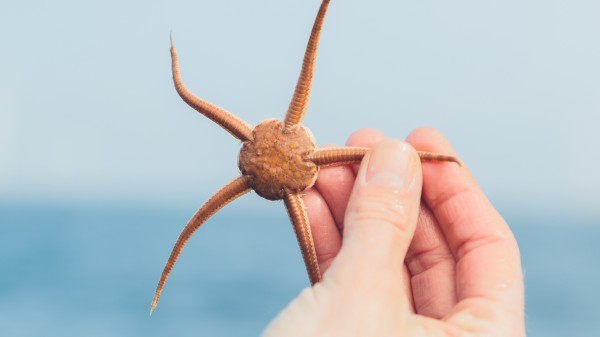Some 290 shipwrecks lie in the Belgian part of the North Sea alone, with probably more than 1,000 in the entire North Sea, many of them silent witnesses to the two world wars. Until recently, the environmental impact of these wrecks was largely unknown and, as far as the presence of munitions is concerned, they represented a true Pandora’s box. The North Sea Wrecks project has changed this. Researchers examined the munitions and the possible release of toxic substances from a few selected wrecks in the North Sea. Are these wrecks really leaving us a toxic legacy of war, or are we worrying about nothing? In this article, we try to discover the answer.
– BART DE SMET
An inglorious end
On 11 February 1942, with World War II showing no sign of abating, German naval forces launched a risky operation in the English Channel. The battleships Scharnhorst and Gneisenau and the heavy cruiser Prinz Eugen needed to return from the French port of Brest to their German home ports as soon as possible. They were to be assisted in this by numerous escort ships. The riskiest but shortest route was through the sea strait between England and France, and the Germans decided to take their chances. On 13 February, they managed to pilot the ships – not entirely unscathed – into German waters: a successful military operation that came to be known as Operation Cerberus, or the Channel Dash.
What the history books fail to report, however, is that one of the escort ships fared less well. In the afternoon of 12 February, six British Air Force bombers took the German patrol boat V-1302 John Mahn under fire off the coast of Ostend. The first bomb struck the vessel midships and exploded in the boiler room. The second, fatal bomb hit the stern tube and sank the John Mahn in barely half a minute. Although 27 crew members were rescued by other patrol boats and vessels of the 2nd Mine Sweeper Flotilla, 11 sailors were missing and presumed dead.

The wreck of the John Mahn still lies some 35 metres down at the bottom of the Belgian part of the North Sea. Apart from the missing superstructure and a large crack on the port side, the wreck is largely intact. The John Mahn is just one of many ships to have met such an inglorious end, as it is estimated that there are some 290 shipwrecks on the Belgian North Sea floor, many of them silent witnesses to the two world wars. However, the cultural heritage value of these shipwrecks and the stories of human suffering that they represent mean that many of them still arouse fascination, decades later.
Unknown environmental impact
Wrecks at the bottom of the sea are relatively well known for their potential to increase biodiversity in an otherwise sandy environment. Slowly, the wooden or steel structure becomes buried under a layer of sand and overgrown with a variety of algae and animals such as sponges and anemones; species that would not naturally occur in the area due to the lack of a hard substrate. Wrecks therefore create biodiversity hotspots.
Less well known are the locations, identities, and conditions of these shipwrecks, along with their negative environmental impacts due to the oil, lubricants, paints, fire extinguishing materials, metals, bombs and cargo left in them. Up to now, we have only been able to guess at the effect of these on fauna and flora.
Oil pollution is one well-studied environmental issue, with examples such as the wreck of the US battleship Arizona at the bottom of Pearl Harbor in Hawaii, which is still leaking oil since sinking in World War II, 82 years ago. Other wrecks may not leak oil straight away, but come to do so in time due to corrosion of the oil tanks on board. While pumping the oil out of shipwrecks can avoid such unpleasant surprises, it is a costly operation, and there are simply too many wrecks for this to be a feasible option: 8,569 potentially polluting wrecks lie on the seabed worldwide. Together, these wrecks are estimated to contain between 2.5 and 20.4 million tons of oil. To give an idea of what this means, it is about 2 to 20 times the amount of oil that was released during the Deepwater Horizon drilling rig disaster in the Gulf of Mexico in 2010 (about 1.1 million tons of leaked oil).
As well as oil, sunken ships can contain coal, lubricants, anti-fouling paint and other chemicals needed for ship operations, as well as hazardous cargo. The most well-known example of the latter is that of submarine U-864, which attempted to smuggle a cargo of 67 tons of mercury from Germany to Japan. The submarine was sunk on 9 February 1945 near Bergen in Norway, where it now lies at the bottom of a 150-metre-deep fjord. It is impossible to remove the mercury on board due to the submarine’s position on the edge of the continental slope, as disrupting the wreck could worsen the problem rather than fix it, which of course needs to be avoided at all costs.
Finally, there is the issue of war munition. Almost all war wrecks have munition on board to a greater or lesser extent, but what is its condition? How much munition is left on board? Is it still dangerous and is it leaking? And, how can we best deal with these wrecks and their toxic cargoes? These are all questions that, until recently, there were no answers to. Answers needed to be found, however, especially considering the blue economy activities currently being developed in the North Sea (e.g. wind farms, aquaculture, coastal defence). A transnational approach was therefore needed.
North Sea Wrecks project
The EU-funded North Sea Wrecks project was initiated in 2018 and united nine partners from Belgium, the Netherlands, Germany, Denmark and Norway. The project aimed to develop a tool to estimate the potential environmental impact of wrecks and war wrecks before commencing sea-related activities.
To study the presence of munitions and the potential leakage and spread of toxic substances, the researchers focused on 15 case studies selected from over 1,000 known shipwrecks in the North Sea region.

The Flanders Marine Institute (VLIZ) conducted a preliminary study of the 290 known wrecks in the Belgian North Sea, from which they selected three for further research. The selection criteria were based on archive material and information on the location, depth, condition, legal protection status and accessibility of the shipwrecks, as well as on the type of wreck and munition. The selected wrecks were the John Mahn (a refitted fishing trawler that sank right in the middle of the Belgian North Sea), the SS Empire Blessing (a Liberty ship that sank with a full cargo of munition off the coast of Knokke and was then blown up and levelled after WWII) and the HMS Basilisk (a British destroyer that took part in the evacuation of Dunkirk in WWII – Operation Dynamo – before sinking off the coast of Koksijde).
The researchers collected water and sediment samples from around the wrecks to examine toxicity, and divers placed mussels in the vicinity of the wrecks to be used as bioindicators: organisms that provide information about, in this case, the water quality. Mussels are filter feeders, which means that they create a flow of water over their gills and filter out small particles and substances, which they feed on. If toxic substances are leaking from the munitions in a wreck, the researchers are very likely to find them in the mussel flesh after the mussels have been feeding in the vicinity of the wreck for several months. The researchers also analysed the tissues of fish sheltering in or around the wreck.
New insights
As it turned out, two of the three wrecks still contained munitions. Only in the heavily battered wreck of the SS Empire Blessing were no munitions found. The John Mahn and the HMS Basilisk are estimated to still contain one and two tons of munitions, respectively, which are leaking due to corrosion of the metal casings under the influence of their long exposure to salt water. The researchers found elevated concentrations of the carcinogenic explosive TNT (trinitrotoluene) and its degradation products in the water, the sediment and the flesh of the sampled mussels and fish.
The question then quickly arises: is this something we need to worry about? The concentrations measured (a few nanograms per kilogram, or one billionth of a gram per kilogram) were well below levels that are harmful to humans and animals, as the first mild symptoms of chronic toxicity are observed from about one microgram per kilogram. As alarming as the toxic leaks may seem, there is therefore no cause for alarm.
Furthermore, studies of the bacterial communities at the wrecks show that the wrecks are in fact ‘self-cleaning’, as the community of microorganisms around wrecks comprises many families of bacteria that naturally break down the toxic substances. Major human intervention to clean up these war wrecks therefore seems to be unnecessary for now.
The wrecks in the Belgian part of the North Sea are not an isolated case, as wrecks surveyed in the waters of other North Sea countries also harbour considerable cargoes of munition and are also leaking toxic substances.
Risk assessment
The researchers fed all the data collected – from properties of the wreck, hydrological models and observations by divers to data on human activities around the wreck – into an application: a tool to help policymakers conduct a risk assessment of the impact of a wreck. Questions that the tool can help to answer include: “What is the likelihood of a particular wreck releasing hazardous substances into the environment?” and: “Which wrecks are potentially the most polluting and require the most attention?” The extensive round of testing and presentation of the risk assessment tool to stakeholders has been completed, so that the application is now ready for wider use.
The approach has meanwhile been embraced by OSPAR, an organization that aims to protect the marine environment in the north-east Atlantic Ocean (including the North Sea) through international cooperation.
What does the future hold?
North Sea Wrecks is the first project to carry out detailed research at the scale of the North Sea into the impact of the munitions still present in war wrecks on the bottom of the North Sea. It is clear that, 80 years after the last world war ended, many tons of munitions are still leaking in and on the seabed; a previously unknown and unstudied environmental risk.
Even though current concentrations are too low to be alarming, close monitoring and further investigation of these war wrecks are imperative, as is a plan of action should a problem arise. To address this, the follow-up project REMARCO (Remediation, Management, Monitoring and Cooperation addressing North Sea UXO) was recently approved by the EU. The Alfred Wegener Institute for Polar and Marine Research (project lead), the Flanders Marine Institute (VLIZ) and the Royal Belgian Institute of Natural Sciences (OD Nature) will collaborate with various international partners to develop better detection techniques for munition leaks and to explore strategies to combat pollution caused by war wrecks.
More information
The North Sea Wrecks project was funded under Priority 3 of the Interreg North Sea Region Programme, which works to protect the environment and ensure the sustainable management of the North Sea. More information can be found on the Interreg North Sea Region website.


